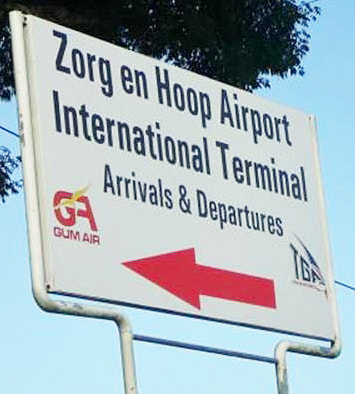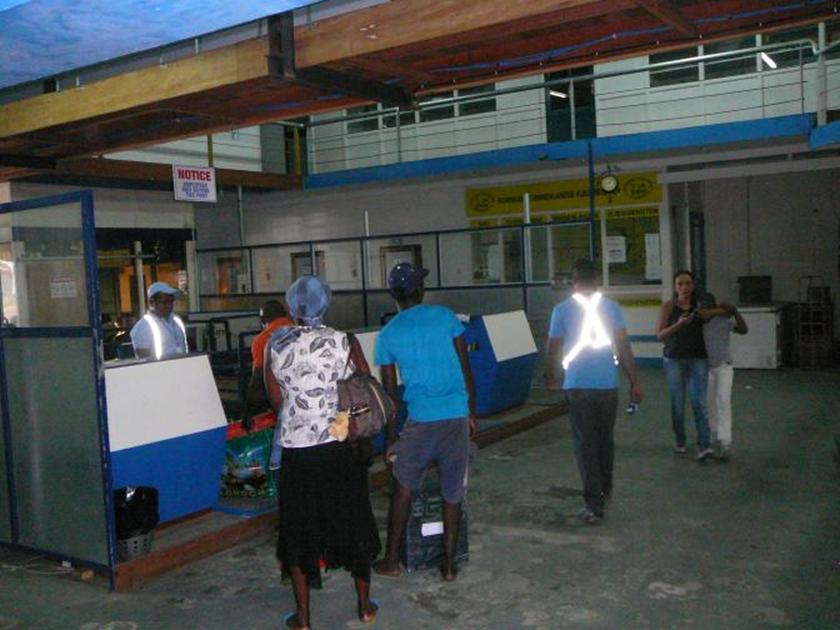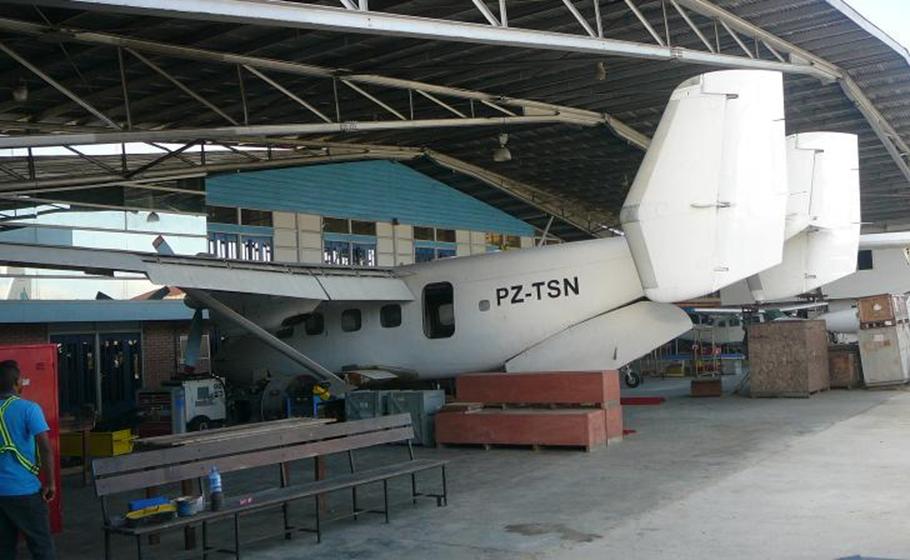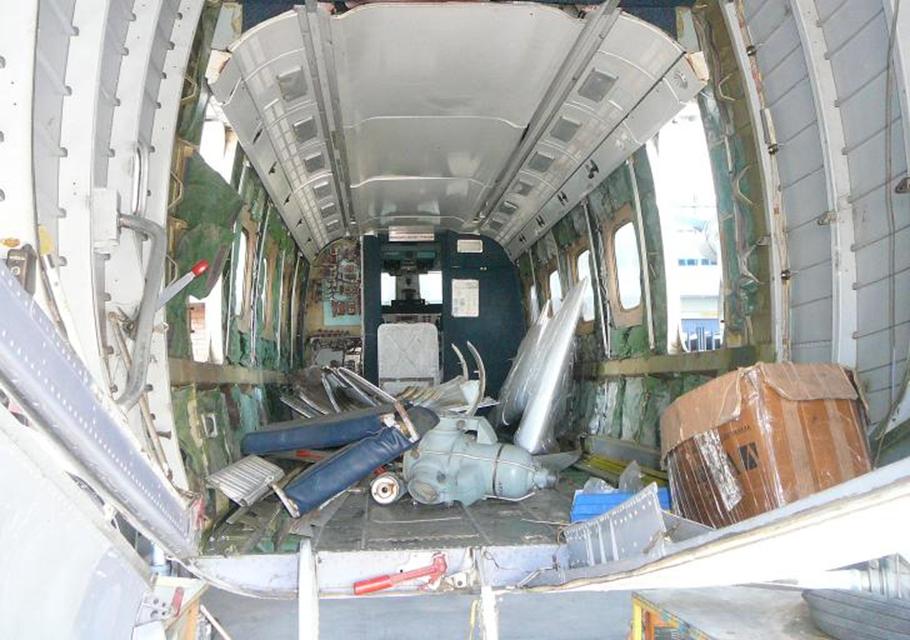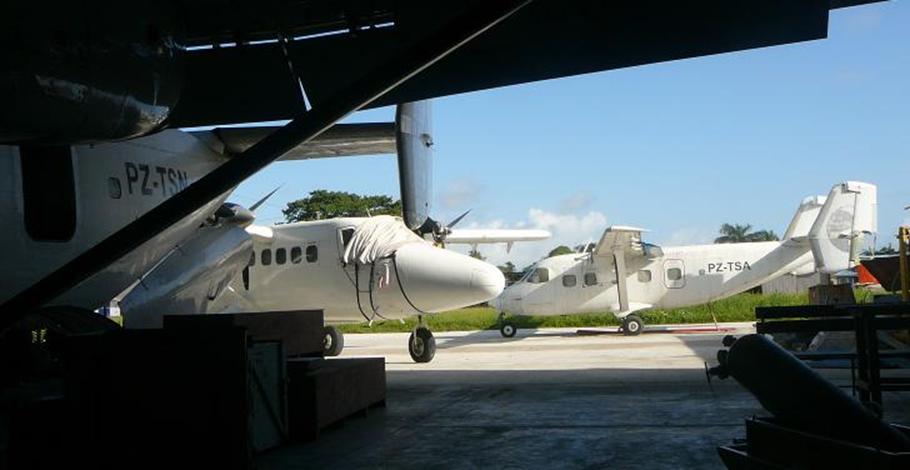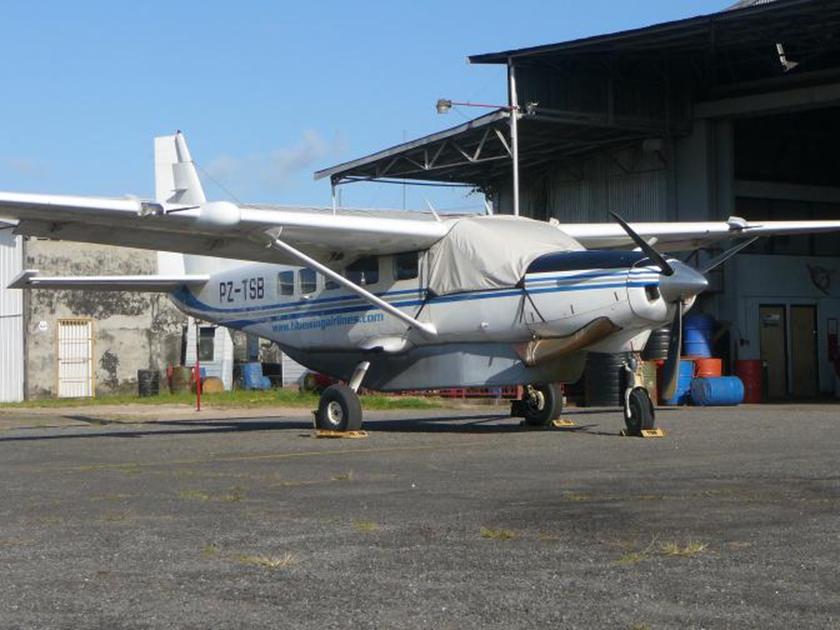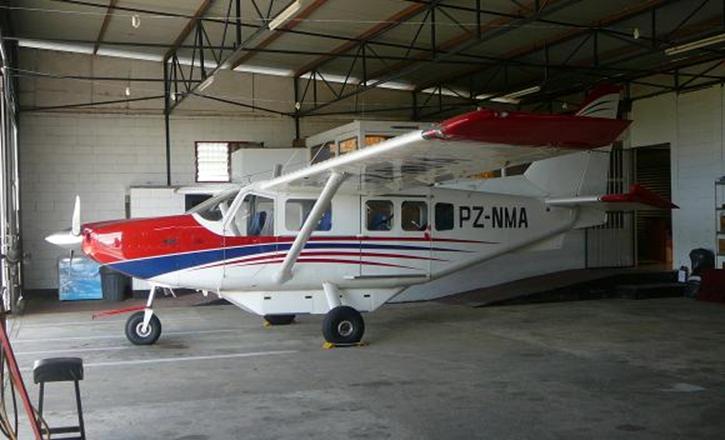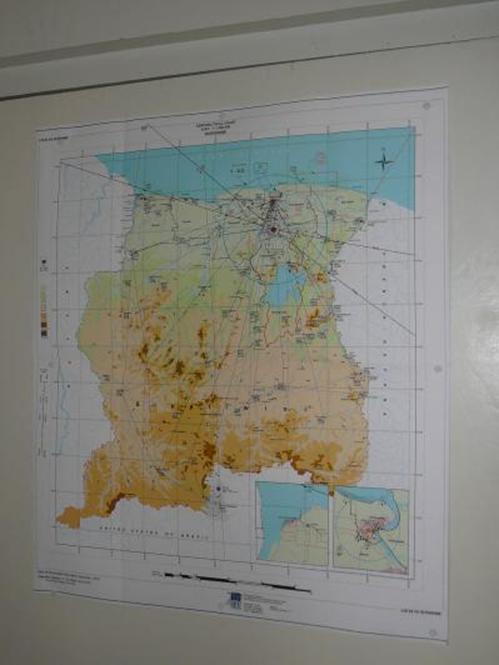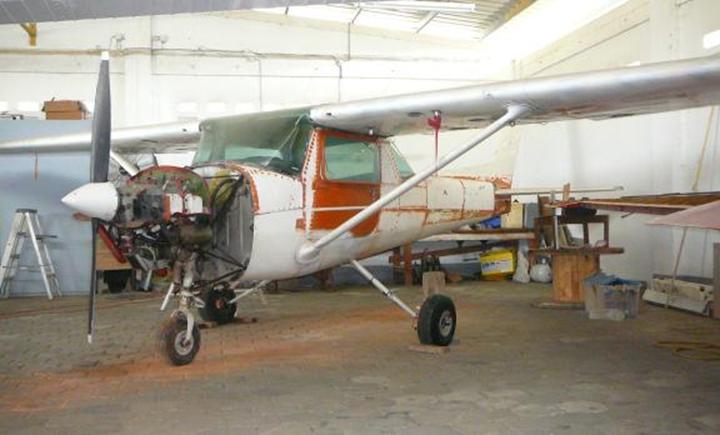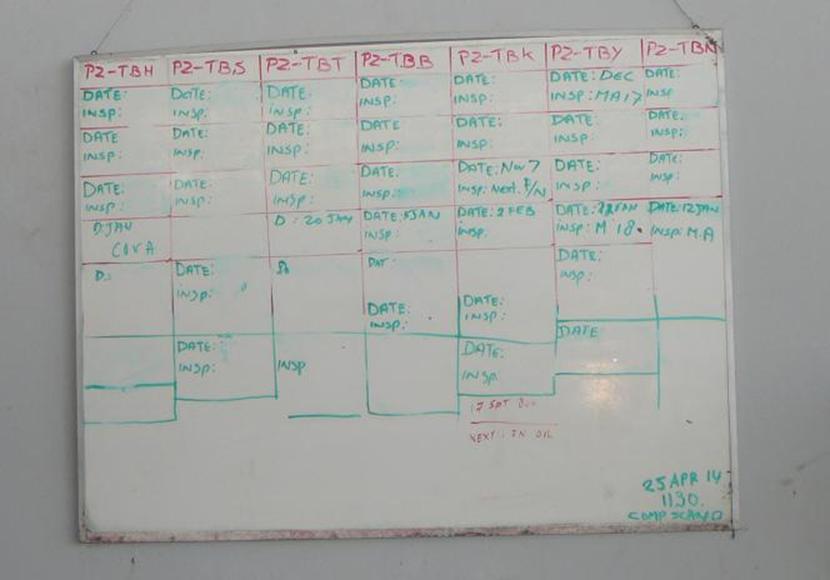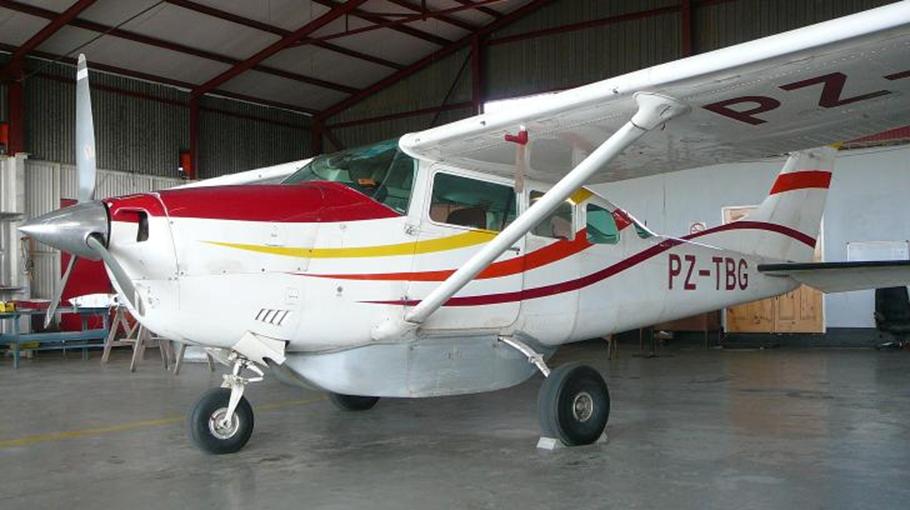Zorg & Hoop, Paramaribo’s City Airport
by Jan Koppen
The last week of February 2014, I have visited Zorg & Hoop Airport, which is situated in the center of Surinams capitol, Parimaribo.
The tower and Brittain Norman Islander PZ-TYL.
Zorg en Hoop Airport (IATA: ORG, ICAO:SMZO) is an airport located in the city of Paramaribo, Suriname. The runway length is only sufficient for smaller aircraft, airliners serving Paramaribo from the international Zanderij Airport 45 km south of the city. Zorg en Hoop Airport is located between the city quarters of Zorg en Hoop and Flora. The airport is suitable for charters and regular services with smaller aircraft, and for helicopter flights. From the airport, the connection is maintained with several smaller airports in the interior of Suriname and for charter flights to the Caribbean.
The only regular international connection at the airport is to Georgetown, the capital of Guyana with Trans Guyana Airways and Gum Air.
In October 1952, the airport was put into use when Ronald Kappel and Herman van Eyck started a first Surinamese air company. The first flight was made with a Stinson V-77 Reliant airplane of the company Kappel-van Eyck. In November 1952 this company built the first hangar at Zorg en Hoop airfield and added a second Stinson Reliant airplane to their fleet. In the summer of 1953 Zorg en Hoop Airport was used to develop many airstrips in the interior. The first mail delivery and passenger flights in Suriname were made from Zorg en Hoop to Moengo on 22 August 1953 and to Coronie on September 28th. Later also to Nickerie and Albina with the new Piper Cub of Kappel-van Eyck.
The only regular international connection at the airport is to Georgetown, the capital of Guyana with Trans Guyana Airways and Gum Air.
In October 1952, the airport was put into use when Ronald Kappel and Herman van Eyck started a first Surinamese air company. The first flight was made with a Stinson V-77 Reliant airplane of the company Kappel-van Eyck. In November 1952 this company built the first hangar at Zorg en Hoop airfield and added a second Stinson Reliant airplane to their fleet. In the summer of 1953 Zorg en Hoop Airport was used to develop many airstrips in the interior. The first mail delivery and passenger flights in Suriname were made from Zorg en Hoop to Moengo on 22 August 1953 and to Coronie on September 28th. Later also to Nickerie and Albina with the new Piper Cub of Kappel-van Eyck.
CariCom Islander PZ-TYD in SLM colours. Five years later, I saw her in a maintenance shed at Curacao-Hato.
SAF 004 without props.
Inter Tropical ceased operations long ago. This BN Island PZ-TGT was former SAF 003 of the Surinam Air Force.
Surinam Air Force BN Islander SAF 004 and most probably SAF 002 without colours and any Marks.
SAF 001 without rudder.
Surinam Air Force Casa 212-400 N847CA at the Blue Wings maintenance ramp.
Blue Wing Airlines n.v. is an airline with its head office on the grounds of Zorg en Hoop Airport in Paramaribo, Suriname.
The airline started operations in January 2002 and operates charter and scheduled services from Paramaribo to destinations in the interior of Suriname, Guyana, Brazil, Venezuela and the Caribbean area. Its main base is Zorg en Hoop Airport.
The airline started operations in January 2002 and operates charter and scheduled services from Paramaribo to destinations in the interior of Suriname, Guyana, Brazil, Venezuela and the Caribbean area. Its main base is Zorg en Hoop Airport.
Two Cessna U206G Stationairs 6's and an Antonov 28 became the first aircraft of Blue Wing Airlines (named after the Blue Wing, a local bird). Per January 2002, Blue Wing started operations from Zorg en Hoop airfield in Paramaribo. It was started with domestic operations to the many small strips Suriname is owing to mining activities. In the mean time also scheduled services to neightbour Guyana and French Guyana were offered.
During 2004 and 2005, four Antonov 28's were added to the fleet. In May 2006, the Antonov's were the only aircraft capable to operate from the inland strips during the severe flooding and were extensively used for relief flights.
During 2004 and 2005, four Antonov 28's were added to the fleet. In May 2006, the Antonov's were the only aircraft capable to operate from the inland strips during the severe flooding and were extensively used for relief flights.
The Antonovs caused a lot of commotion in Suriname after Blue Wing was put on the European Union black list of unsafe airliners. Meanwhile, local newspapers and other media speculated about the safety of the Antonovs.
The airline was on the list of air carriers banned in the EU; however, they were removed from the list as of 28 November 2007. As of 6 July 2010, however, the airline was once again on the blacklist and remains on the blacklist to this current day. In 2014 the airline was ranked as one of the worlds least safe by Airline Ratings.
The airline was on the list of air carriers banned in the EU; however, they were removed from the list as of 28 November 2007. As of 6 July 2010, however, the airline was once again on the blacklist and remains on the blacklist to this current day. In 2014 the airline was ranked as one of the worlds least safe by Airline Ratings.
Blue Wing maintenance hangar.
During 2004 and 2005, four Antonov 28s were added to the fleet. Earlier another former ITA Cessna U206G (PZ-TLV) was put into service. In May 2006, the Antonovs were the only aircraft capable to operate from the inland strips during the severe flooding and were extensively used for relief flights.
The Antonov An-28 (NATO reporting name Cash) is a twin-engined light prop transport aircraft, developed from the Antonov An-14M. It was the winner of a competition against the Beriev Be-30 for use by Aeroflot as a short-range airliner. It first flew in 1969. A total of 191 were built and 68 remain in airline service at August 2006.
After a short pre-production series built by Antonov, it was licence-built in Poland by PZL-Mielec. In 1993, PZL-Mielec developed its own improved variant, the PZL M28 Skytruck. The An-28 is similar to the An-14 in many of its aspects, including its wing structure and twin rudders, but features an expanded fuselage and turboprop engines, in place of the An-14's piston engines. The An-28 first flew as a modified An-14 in 1969. The next pre-production model did not fly until 1975. In passenger carrying configuration, accommodation was provided for up to 15 people, in addition to the two-man crew. Production was transferred to PZL-Mielec in 1978. The first Polish-built aircraft did not fly until 1984. The An-28 finally received its Soviet type certificate in 1986.
On April 3, 2008, destiny strikes. During a go-around at the Benzdorp Lawa Antino Airstrip, Suriname, Antonov An-28 PZ-TSO was lost. The aircraft crashed into the jungle about 150 m next to the strip and burst into flames. All 19 occupants were killed. Among the victims was pilot Soeriani Verkuijl, wife of Amichand Jhauw. Only by late October 2008 the Flight Data Recorder was discovered during a reconstruction of the wreck. The investigation into the accident is not finished yet. The crash again attracted attention to the safety of the Antonov An-28. Also investigation was focused on the awkward infrastructure of the (not certificated) inland strips, of which several are privately owned. From late 2008 on the effects of the economical crisis were felt due to decrease of the mining activities and dropping tourism. Also, on the local market, prices for fuel increased sharp. The scheduled services appeared lucrative enough to survive.
On October 15, 2009 a second Antonov An-28 was lost. PZ-TST broke into two pieces after a hard landing on the Kwamalasamutu strip in the South of Suriname. Luckily all 4 occupants remained uninjured.
Finally a third Blue Wing Antonov An-28 (PZ-TSV) crashed on May 15th, 2010 near Poeketi in which all 6 passengers and two crew perished.
Shortly after, the Antonovs caused a lot of commotion in Suriname after Blue Wing was put on the European Union black list of unsafe airliners. Consequently the company grounded the remaining two Antonovs (PZ-TSA, which is the re-registered PZ-TGW & PZ-TSN) indefiitely.
On October 15, 2009 a second Antonov An-28 was lost. PZ-TST broke into two pieces after a hard landing on the Kwamalasamutu strip in the South of Suriname. Luckily all 4 occupants remained uninjured.
Finally a third Blue Wing Antonov An-28 (PZ-TSV) crashed on May 15th, 2010 near Poeketi in which all 6 passengers and two crew perished.
Shortly after, the Antonovs caused a lot of commotion in Suriname after Blue Wing was put on the European Union black list of unsafe airliners. Consequently the company grounded the remaining two Antonovs (PZ-TSA, which is the re-registered PZ-TGW & PZ-TSN) indefiitely.
Both An-28s were withdrawn form use in 2010. Both are for sale!
Probably under influence of the negative media attention, new types were gradually introduced into the Blue Wing fleet. During 2007, a Cessna 208 Caravan I (PZ-TSB) was added to the fleet, while at the end of 2007 the first DHC-6 Twin Otter (PZ-TSD) was purchased. During November 2008 again a new type was added to the fleet when a Reims/Cessna F406 Caravan II (PZ-TSF) arrived. This aircraft is operated as an “executive transport”. Furthermore, a few weeks later, a second DHC-6 Twin Otter (PZ-TSH) was purchased in Australia. In 2010 a Cessna 208B Grand Caravan (PZ-TSK) was added to the fleet.
Cessna 206 PZ-TSC with speed bag under her belly.
Grand Caravan PZ-TSB sitting idle at Zorg & Hoop.
Gippsland GA-8 Airvan PZ-NMF and NMA were present in MAF's hangar.
An anonymous Cessna 150 in deep maintenance.
Antonov An-2R (PZ-PBR) c/n. 1G 168-14 was imported from Hungary into Surinam in 2004. Her former Hungarian registration was HA-MBR.
Cessna 208A Grand Caravan PZ-TBH.
The Gummels family. Gum Air N.V. is a family owned company located at Zorg en Hoop Airport in Paramaribo, Suriname. The airline has been in business for more than 40 years and owns a vast experience in bush flying, operating to every single airfield in Suriname. Gum Air serves mostly tour operators, mining businesses, local villages, medical cases and government support flights. The Gummels family is a highly respected family of aviators and farmers within the country.
Gum Air was started in 1972 by six brothers of the Gummels family who saw a market opportunity in internal charter flights. When they realized that there was business in flights between Paramaribo and District Nickerie, they expanded their company “Sky Farmers” that had blended aviation and farming in the rice district. Sky Farmers purchased passenger aircraft and Gum Air was born. Today the company is the oldest and largest privately owned local airline.
Gum Air was started in 1972 by six brothers of the Gummels family who saw a market opportunity in internal charter flights. When they realized that there was business in flights between Paramaribo and District Nickerie, they expanded their company “Sky Farmers” that had blended aviation and farming in the rice district. Sky Farmers purchased passenger aircraft and Gum Air was born. Today the company is the oldest and largest privately owned local airline.
Spirit of Pike! - Who is Pike?
The Cessna 208 Caravan is a single-engined turboprop, fixed-tricycle landing gear, short-haul regional airliner and utility aircraft that is built in the United States by Cessna. The airplane typically seats nine passengers with a single pilot, although with a FAR Part 23 waiver it can seat up to fourteen passengers. The aircraft is also used for cargofeederliner operations.
PZ-TBH "Spirit of Pike" is a Cessna 208B Grand Caravan. A 4 feet (1.2 m) stretch of the Caravan I. The 208B features a more powerful PT6A-114A engine.
PZ-TBH "Spirit of Pike" is a Cessna 208B Grand Caravan. A 4 feet (1.2 m) stretch of the Caravan I. The 208B features a more powerful PT6A-114A engine.
DHC-6-300 PZ-TBN receiving heavy maintenance.
Cessna 206 PZ-TBG.
- The End -

